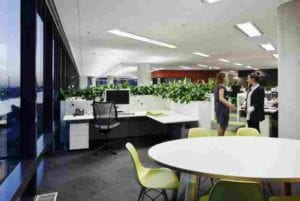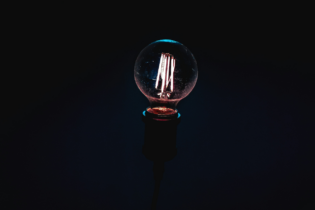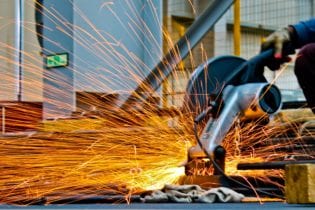Office buildings are becoming more futuristic in order to accommodate the needs of changing workforces, changing business practices, new technology, globalisation and client needs.
In this interview, Aurecon’s technical director for buildings, Pete Greaves, and development leader of property, Jeff Robinson, discusses what futuristic office spaces will look like, what is driving these changes and how building services need to adapt in order to accommodate these needs. Q: What are the drivers of futuristic office spaces? Greaves: The need for more flexible working environments is clear. In the past, all employees worked from a specific office space but today employees work from home, from client sites, from cafés and from communal meeting rooms. Work places need to be flexible in order to accommodate the needs of their workforce. Information and communication technologies (ICT) need to be adaptable in order to provide a seamless experience for everyone. Someone working from home, for example, needs to be able to connect to a company’s servers and instant messaging systems in the same way that an office-bound worker is able to do. Robinson: Leading organisations want high-performing work places that deliver value to their staff. Organisations are interested in creating work places that help their employees collaborate with each other, as well as externally with clients. At Aurecon, we work with our clients and their architects and interior designers to create workplace environments that bring people together, and helps them collaborate and innovate. How are sustainability, energy efficiency and green living incorporated into futuristic office spaces? Greaves: Futuristic office spaces aren’t all about technology and advanced ICT systems. Leading organisations are focusing on offering greater access to daylight, natural ventilation, better views and green spaces within and surrounding their buildings. Bringing the outdoors inside has become a greater priority in futuristic office spaces. Robinson: Research has shown that employees perform better and have better mental functioning if they’ve got views to nature, adequate lighting and adequate ventilation. A new report entitled The Global Impact of Biophilic Design in the Workplace by Human Spaces, the largest carpet manufacturer in the world, shows how nature can be incorporated into the built environment to create spaces that are more productive, calmer and meets people’s evolutionary needs to connect with nature. We’re seeing many green walls and indoor flora in newly redesigned office spaces. There are two approaches that a client can follow when selecting plants for their office: a scattered approach or a dedicated approach. In a scattered approach, efficient T5 fluorescent lamps in the general office lighting system provide ample blue light to assist with plant growth. In dedicated green spaces, the lighting system employed for these plants usually depends on the objectives of the feature. Careful consideration must be given to the objectives for the plants in the building in order to select the appropriate lighting system.What changes do futuristic office spaces bring to the workplace environment? Greaves: The control of an employee’s local environment is increasingly being placed in their own hands. Task lighting, underfloor air distribution systems, blinds and motorised desks allow users to adjust their immediate surroundings to suit their needs. Robinson: An office building is becoming a smart device. Futuristic offices all have WiFi and VOIP (Voice over Internet Protocol) services, which has led to employees adopting a Bring Your Own Device method of working where they are able to use their own smartphones and tablets, as well as company computers seamlessly. Many of these offices have recharge bars where people can charge their devices and some of them have gone one step further by incorporating geo-based application programming interfaces (API), which are location aware applications that can, for example, communicate directly with building services to send a signal that an employee will need an elevator. What is circadian lighting and is it being used in buildings? Greaves: Many office workers lack adequate exposure to daylight and get increased amounts of blue-rich light from their screens. Research has shown that the colour of light affects the functioning of the human body, so forward-thinking clients are installing artificial lighting with consideration of the effects on the circadian rhythm of workers in a commercial environment. Robinson: When workers’ natural circadian rhythm is taken into consideration and the lighting is optimised for this, you’re able to improve their health and maximise their productivity. In the morning, the building could have cool, fresh light that raises the energy level of people coming into the office. During lunch time, you could help people recharge by decreasing the light level and giving it a warmer glow. People usually feel a bit sleepy after lunch, so you could raise the light level and change it to cool white in order to counter the post-lunch dip. It’s not commonplace in buildings at the moment, but I predict that many more futuristic office spaces will start to incorporate this. What other trends are there in futuristic office spaces? Greaves: Many organisations are focused on creating spaces where people can work, live and play. Some of the newer buildings, for example, have end-of-trip facilities for cyclists and runners. Instead of cyclists parking their bikes in a basement or storeroom, they’ve got well-equipped facilities with towels, showers and wall-mounted bicycle racks. Other companies are installing basketball courts, gyms and volleyball courts in order to encourage people to be more active. Robinson: One of the latest health concerns is that ‘sitting is the new smoking’, so organisations are offering employees standing desks and they even have standing meeting rooms. Futuristic offices are focused on giving people what they need to be healthier, perform better and be better employees – something that many forward-thinking clients value.








